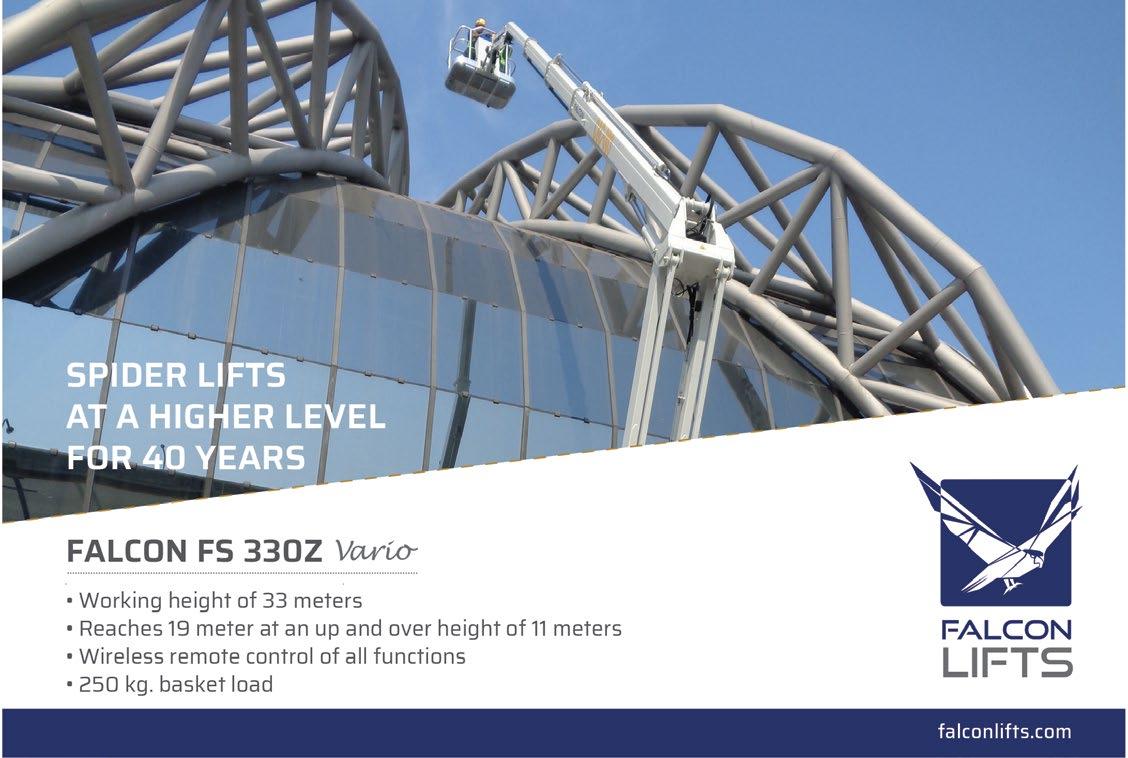
4 minute read
PASMA FOCUS
Training centres are offering free places on selected PASMA courses to help upskill job seekers and improve their chances of finding employment. Anyone who is unemployed and claiming Universal Credit or Job Seekers’ Allowance can apply for a free place on the following PASMA training courses, subject to availability:
• Towers for Users
• Low Level Access
• Combined Low Level Access and Towers for Users
• Work at Height (Novice)
For every delegate who takes up this offer, PASMA will donate £1 to the No Falls Foundation. The offer is open until the end of 2020. For more details and a list of participating training centres, visit pasma.co.uk/handup.
Using towers in bad weather
The changing seasons inevitably bring more rain, more wind and eventually, frost and snow. Stay safe on scaffold towers by following these tips: • Do not work on towers during snowy or frosty weather or in heavy rain because you could slip and fall. • If the average wind speed reaches 17mph, stop work and dismantle the tower. Use a handheld anemometer to monitor the wind speed while you are working.
• Be cautious – wind speed can increase significantly in certain locations, such as between high buildings or at the top of a hill.
• During risk assessments, check the weather forecast to make sure conditions are expected to be suitable for the work that you will be doing.
• Check the instruction manual for guidance. Remember you must follow the manual when you build the tower and have it on site – it is a legal requirement.
• When working near overhead electrical cables, rain is an added complication. Whatever the weather, consult the appropriate national guidance on working safely near electricity and your local power company for advice on safe distances. Always be aware of the flash factor (arcing), but especially in wet conditions.
• After wind, rain, snow or frost, re-inspect your tower and the ground conditions. Ensure the stability and structural integrity of the tower have not been affected before re-starting work.
A new name for Tower Riggers…
PASMA is relaunching its training scheme for complex aluminium access towers, and with it comes a new name for those who complete the challenging programme – they will be known as Access Tower Specialists.
More on this in the next issue, until then visit pasma.co.uk/ats
Ray Cooke joins No Falls Foundation
Following his retirement from a 35-year career with the Health & Safety Executive (HSE), Ray Cooke has joined the No Falls Foundation as its first health & safety advisor. He will initially focus on securing support for the implementation of the recommendations of the 2019 inquiry report of the All Party Parliamentary Group on Working at Height.

Tower standards - what’s changing next year?
An easy way to tell if the tower you are planning to rent or buy includes all the necessary safety features is simply to check it is certified to the relevant design standard. If it’s a mobile access tower - a straight up and down, single bay structure with four legs and wheels - it must comply with BS/ EN 1004. If it’s another configuration tower, such as a cantilever tower, then it’s BS 1139-6.
BS/ EN 1004 is being updated soon, so this is a great time to specify its use in your organisation. Here is what you can expect to see in the new standard:
1. Low-level towers brought into scope Towers with a working platform below 2.5 metres will fall within the scope of BS/ EN 1004 for the first time, as the new standard covers towers from the ground up.
2. Mobile access towers will be even safer New measures to make towers safer for their users include:
• Shorter distance between platform levels (2.25 metres - down from 4.2 metres)
• Shorter distance from the ground to first platform (maximum 3.4 metres, down from 4.6 metres)
• Measures to prevent castors falling out
• Platforms must be secured at both ends so they will not uplift in wind
• New guidance for designers and manufacturers on wind and gust loads
3. Expect product innovation Manufacturers will have more freedom to develop products that better meet users’ needs, thanks to two changes:
• For towers with a working platform below two metres it will be possible for manufacturers to develop products that allow access from outside the tower – if strict rules on stability are followed
• There will be scope for new developments in Advance Guard Rail (AGR) systems, thanks to new geometry for side protection included in the revised standard.

For more information about the Access Industry Forum (AIF) and the No Falls Foundation charity for working at height, please visit www.accessindustryforum.org.uk and www.nofallsfoundation.org













